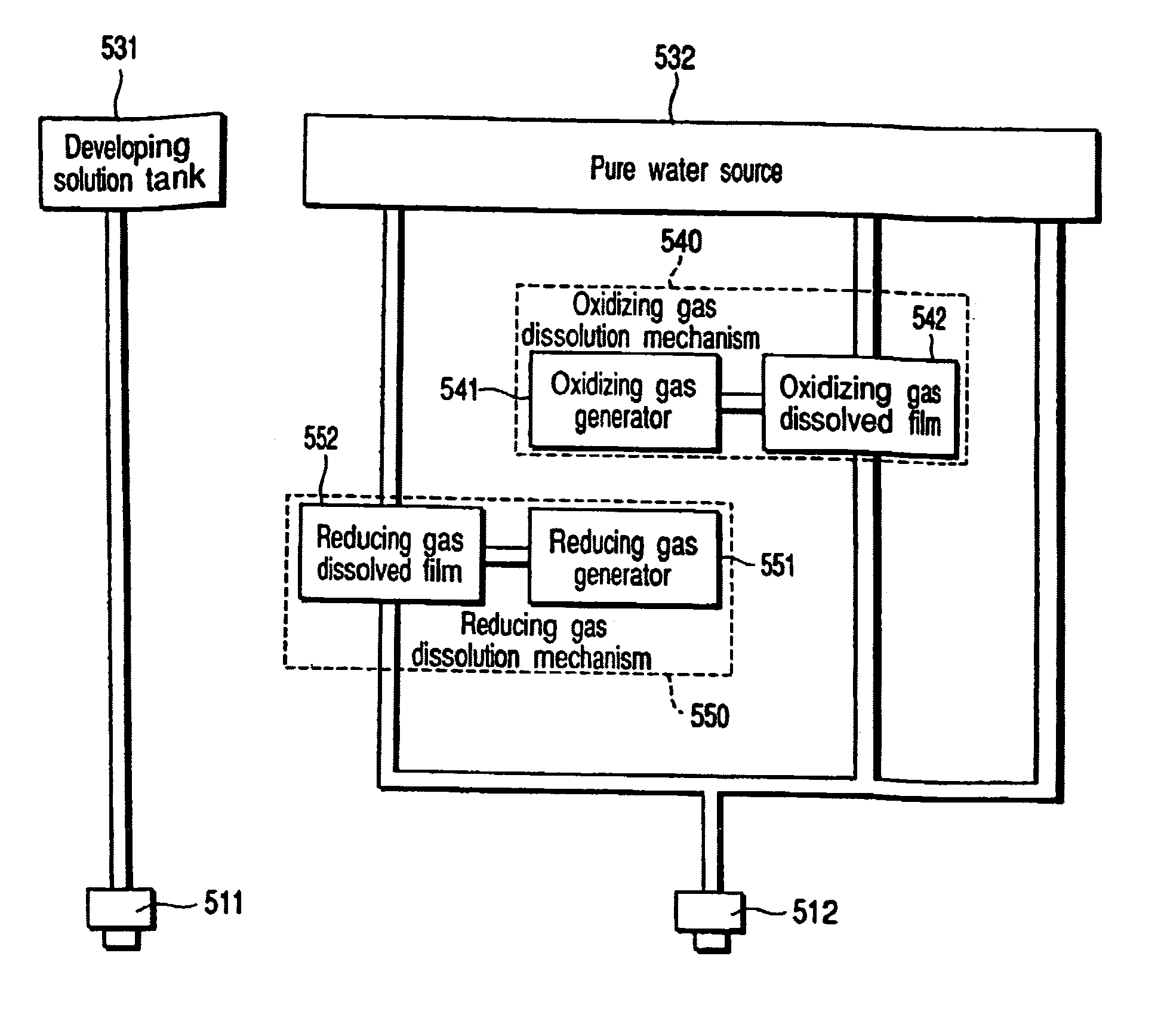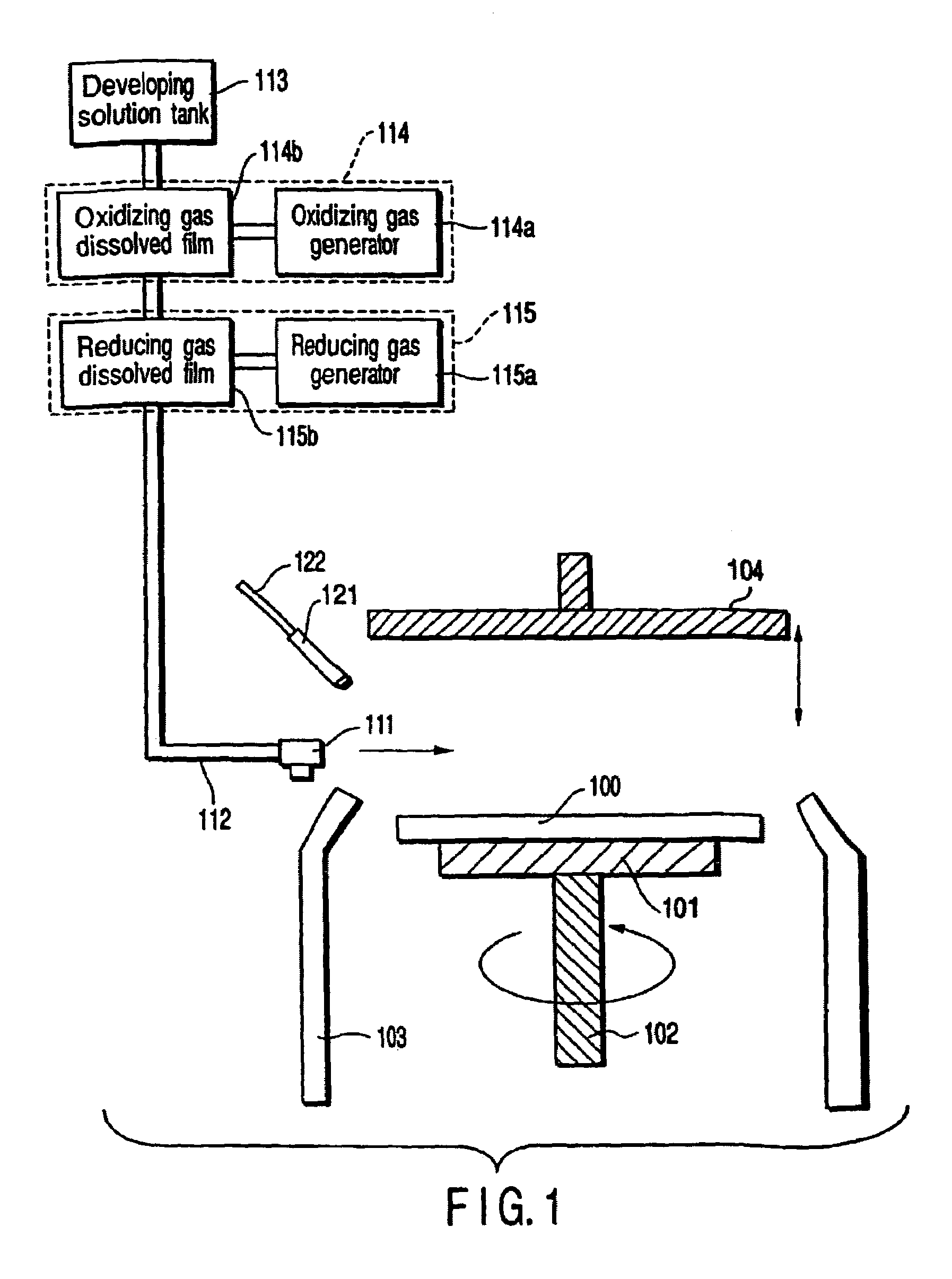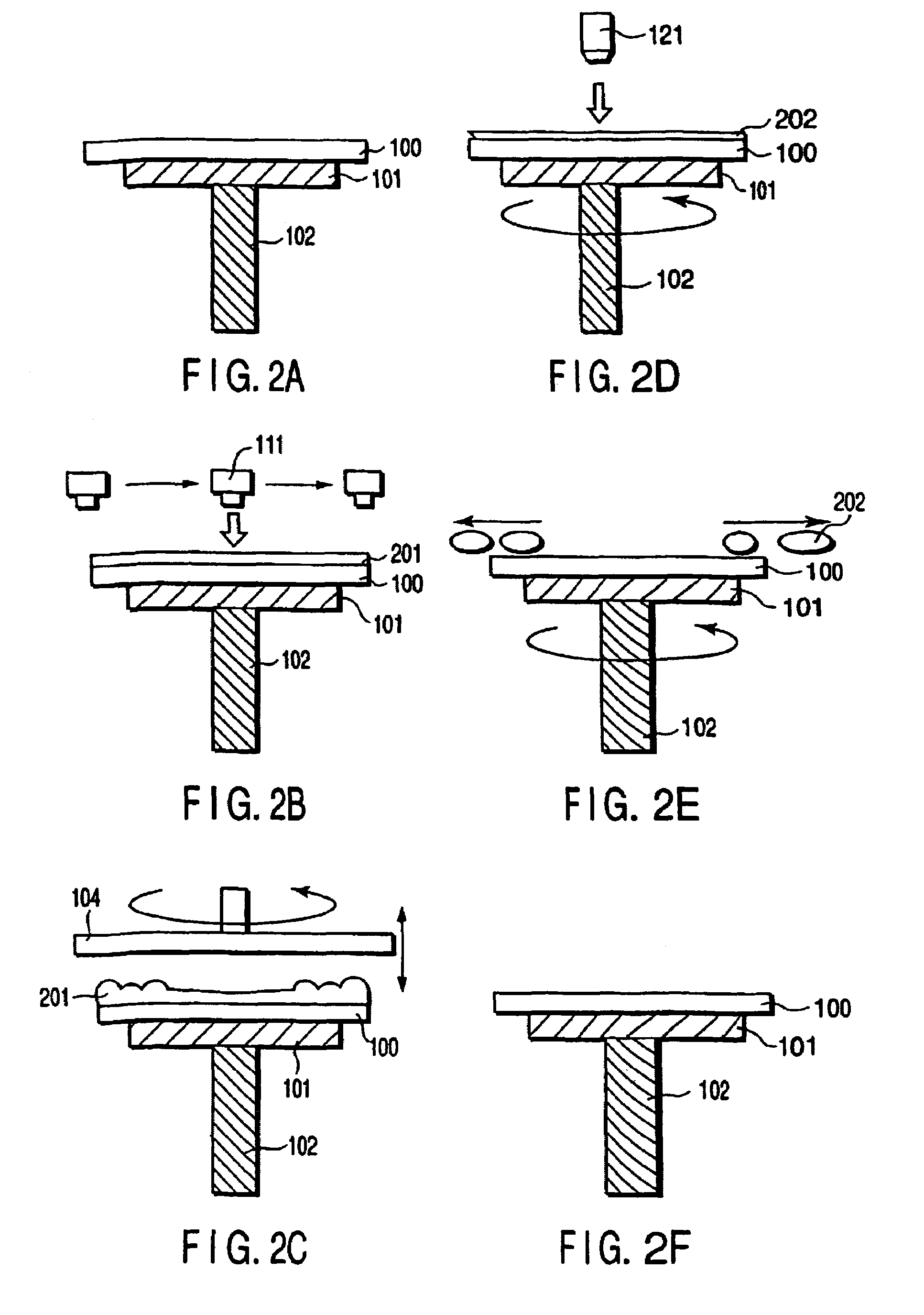Alkaline solution and manufacturing method, and alkaline solution applied to pattern forming method, resist film removing method, solution application method, substrate treatment method, solution supply method, and semiconductor device manufacturing method
a technology alkaline solution applied in the field of alkaline solution and manufacturing method, can solve the problems of large problems, insufficient wettability with respect, and the development solution is not easily diffused between the reaction product and the photosensitive resist surface, and achieves the effect of reducing properties
- Summary
- Abstract
- Description
- Claims
- Application Information
AI Technical Summary
Benefits of technology
Problems solved by technology
Method used
Image
Examples
first embodiment
[0046](First Embodiment)
[0047]FIG. 1 is a diagram showing a schematic constitution of a developing unit according to a first embodiment of the present invention.
[0048]In the present unit, as shown in FIG. 1, a fixed base 101 onto which a substrate 100 is fixed is connected to a rotation mechanism 102 for rotating the fixed base 101 and substrate 100. A protective cup 103 with which the periphery of the substrate 100 is covered is disposed in order to prevent a developing solution, cleaning solution, and the like on the substrate 100 from being scattered during rotation of the substrate 100 by the rotation of the rotation mechanism 102.
[0049]A developing solution supply nozzle 111 scanned on the substrate 100 is disposed. A developing tank 113 is connected to the developing solution supply nozzle 111 via a pipe 112. The deaerated developing solution is stored in the developing tank 113. The developing solution stored in the developing tank 113 is an aqueous solution such as alkaline ...
second embodiment
[0088](Second Embodiment)
[0089]The developing method of supplying the reducing developing solution as the developing solution to the surface of the substrate by the developing unit shown in FIG. 1 will next be described with reference to FIGS. 4A to 4F. FIGS. 4A to 4F are process diagrams showing the developing process according to a second embodiment.
[0090]First, the substrate is coated with the anti-reflection coating, and chemically amplified resist, and the desired pattern is reduced projection exposure via the reticle for exposure by a KrF excimer laser. After the substrate is heat-treated (PEB), the substrate is conveyed to the developing unit, and held on the fixed base 101 (FIG. 4A).
[0091]Subsequently, the developing solution supply nozzle 111 is scanned from one end to the other end of the substrate 100, and the reducing developing solution is discharged in a curtain form so that a developing solution film 211 is formed on the substrate 100 (FIG. 4B). The developing solutio...
third embodiment
[0121](Third Embodiment)
[0122]FIG. 6 is a diagram showing a schematic constitution of a resist removing apparatus according to a third embodiment of the present invention.
[0123]As shown in FIG. 6, the present apparatus includes a treatment tank 301 in which an oxidizing remover 302 described later is stored. When a wafer cassette 300 with a plurality of substrates stored therein is immersed in the oxidizing removing solution 302, the resist on the substrate surface is removed.
[0124]The present apparatus further includes an oxidizing gas dissolution mechanism 310 for generating the oxidizing remover 302 stored in the treatment tank 301. The oxidizing gas dissolution mechanism 310 dissolves the oxidizing gas with respect to the deaerated removing solution stored in a removing solution tank 304, and generates the oxidizing removing solution 302. The generated oxidizing removing solution is supplied into the treatment tank 301 via a removing solution supply nozzle 303. The oxidizing gas...
PUM
| Property | Measurement | Unit |
|---|---|---|
| flow rate | aaaaa | aaaaa |
| time | aaaaa | aaaaa |
| length | aaaaa | aaaaa |
Abstract
Description
Claims
Application Information
 Login to View More
Login to View More - R&D
- Intellectual Property
- Life Sciences
- Materials
- Tech Scout
- Unparalleled Data Quality
- Higher Quality Content
- 60% Fewer Hallucinations
Browse by: Latest US Patents, China's latest patents, Technical Efficacy Thesaurus, Application Domain, Technology Topic, Popular Technical Reports.
© 2025 PatSnap. All rights reserved.Legal|Privacy policy|Modern Slavery Act Transparency Statement|Sitemap|About US| Contact US: help@patsnap.com



